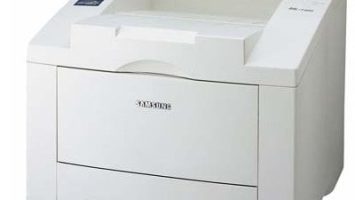The major difference between us (humans) and the rest of the animal kingdom is the fact that we developed our intelligence faster than our evolutionary peers. We have lived through the furthest technological leap our kind has made since the dawn of time. One of the things that we associate with intelligence is tidiness.
Through all the technological advancements we have made as an intelligent sort, our ability to keep our findings documented in an understandable and universal manner has always helped us in advancing our culture.
But as I said earlier in the article, we are living in a period of unprecedented technological advancement, and with that comes an unprecedented amount of data that is being funneled through the business-customer channel.
Many businesses are suffering from unreliable data storage, ineffective resource manipulation, bad in-team communication, and manual import and export of data. All of these things are things that we should leave behind in our venture to the future.
Employees and customers also need to understand your company’s mission and vision, so make sure that you have all this prepared, before going deeper into the business world, this can be crucial afterward in bringing big decisions.

How can CRM help your business? CRM (Customer Relationship Manager) has a wide variety of tools that can be applicable to your business, instantly granting you quality-of-life changes and making your business run smoother. If you’re a business owner and you feel overwhelmed at times by your clients, this is a good solution to try. You can also learn about Scale Agile Framework, which can improve your business even more.
Some of the symptoms of a business in dire need of CRM are :
- Manual data input and generating reports
Manual data input is really something we should stop. The process is grueling, tedious, lengthy, and worse of all. It is error-prone. Oftentimes a typo or a wrong digit in a contact number can be costly. This is a good way to ensure yourself and your team that the documentation you have on hand is correct. It brings a sense of stability and assurance.
Don’t let me even get started on the morale boost that the whole office is going to experience after cutting their data input in half. Do you want to check how your ongoing project is advancing with one of your clients? Open your client’s tab and check the latest report.
Some CRM systems are quite advanced in their automatic reporting software. “Hubspot” is great with this, because it stores all the reports in a “chat-like” box where you can just scroll up and down to keep yourself updated.
- Customer documentation is unreliable/unreadable
In a business world where the customer is always right, it is of the utmost importance to cater to our clients. When your client calls you with a problem, his dream scenario is that you will pick up the phone and, without a moment’s notice, will tell him the easy and quick solution to his problem.

All under a minute. Realistically this isn’t possible, but we can improve. We are not telepathic, but we are tidy. A customer calls to introduce himself/herself and tells you the problem they are having. In an easy and visually-depicted way, you can access all of your client’s data that you have in your system.
The client is new, and you don’t have any infrastructure data about them? Just email them a form that takes 15 seconds to fill and tell them to email you back with the data. Some CRM systems have built-in features that allow them to import data from all sorts of sources.
For instance, “Act!” has a built-in feature to automatically update data from Outlook, and that is just the tip of the iceberg.
- Workflow is hard to manage
Let’s take a toy manufacturing business that has 5 employees as an example. The most efficient way to make toys is to get every employee to do his job as best as he can and pass the rest of the job to the next person, something like a conveyor belt set.

You have the employee that paints, the one that glues, the one that puts the screws in and etc. This is an automated business. If the business wasn’t automated, the higher-ups would have to spend time managing the workflow, which can cause the business to stagnate.
Automating your business gives you time to branch out, find new business ventures and associates, and create new streams of revenue.
- Struggling to keep tabs on all customers
If you are a business that is expanding, you should never forget the smaller clients that you started off with. Keeping a continuous stream of information flowing from all of your clients is hard to manage, and it’s only natural to focus on the clients that are bringing you more revenue.
The smaller clients know they are small, as do the big ones know that they are big, but that doesn’t matter with CRM systems. CRM levels the playing field. No amount of data is too much or too little for a CRM system.
- Miscommunication between personal
Having more than one employee called a customer trying to resolve an issue is a disaster waiting to happen. First of all, it makes the business seem unprofessional. Not to mention that it’s a waste of time and, unfortunately, a very good way to create new issues for your customer.
Let’s say we didn’t have a CRM system in place, a customer calls with an issue, and we say we will get right on it and call them back. A miscommunication appears between two colleagues, and they both try to resolve the problem, but with different solutions.
Both my work and in an individual setting, this would be a solution, but two solutions implemented at the same time can cause a lot of hardship for the client. Not to mention the inconsistencies that would appear in the documentation or the fact that you can bill the client for only one of the solutions you implemented.
- Data is only accessible on-site
If you are limited to accessing your client’s data only from your office, then you are limiting your staff in ways of interacting with your customers. Depending on what kind of business you run, you can manage a couple of people working from home. The problem is when the only way to access the customer data is on-site.

Your employees that work from home have to hassle your other employees to send them a specific file, or an address, or a number. This can be prevented by having all of your customers communicate with you through a CRM system. All the data will be accessible anytime, anywhere, as long as you have an internet connection.
Conclusion
CRM (Customer Relationship Manager) is exactly what it sounds like. It’s a bunch of code bonded and branched together to form a kind of software that has the sole purpose of making your relationship with your customer better.
Imagine a world where all of your data is easy to access, easy to manage, and accessible to all of your employees without the fear of data corruption or deletion. A world in which, with two clicks, you get your message across your whole team.
In a couple of seconds, you can manage your personnel, see all the data going in and out, and oversee reports and tasks at hand. CRM is software that allows you to keep yourself updated with everything that is going on with your business.
Before implementing CRM you have to make sure that you’ve done work for a good group of people. An effective positioning statement template can help you define your niche, who you serve, and what makes your firm stand out from the competition.
If you want to research more on the topic, please check out the top personal CRM apps: overview 2022: https://www.voypost.com/blog/top-personal-crm-apps-overview-2022.



Comments (No)